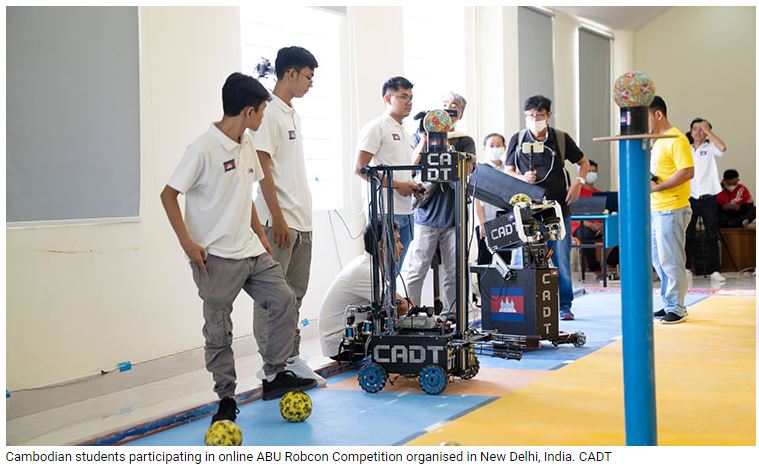Cambodia’s R&D expenditure touched 0.12% of GDP
Cambodia’s expenditure on research and development (R&D) has increased by 0.07 percent of its Gross Domestic Product (GDP) to 0.12 percent in 2020 from 0.05 percent in 2010, and the country’s innovation score has reached about 20.2 over 70, according to the latest report released by Asian Development Bank (ADB) yesterday.
The report titled “Key Indicators for Asia and The Pacific 2022” 53rd Edition for August 2022 which Khmer Times obtained yesterday shows that R&D is an intrinsic component of innovation and that the Covid-19 pandemic has magnified the importance of R&D investments protocols, integration of digital technology for business continuity and other aspects of pandemic management.
“All lower-middle-income
economies and a majority of upper-middle-income economies with available data had R&D allocations less than half the global average,” the report pointed out, adding that several high-income economies invested more than the global average in R&D—1.93 percent of GDP, while spending remains low in most developing economies including Cambodia.
Based on the calculation of Cambodia’s GDP at about $29 billion, the government has spent nearly $35,000 on R&D in 2021. The report shows the number of researchers per million inhabitants recorded in lower middle-income-economies including Cambodia reached as low as 30 and only as high as 757, while the Kingdom’s number is about 150.
ADB’s report also provides recommendations, saying that “enhance scientific research, upgrade the technological capabilities of industrial sectors in all countries, in particular developing countries, including … encouraging innovation and substantially increasing the number of research and development workers per 1 million people and public and private research and development spending.”
The government plans to spend one percent of GDP on R&D by 2030, according to the Science, Technology and Innovation Report 2021 of the Ministry of Industry, Science, Technology and Innovation (MISTI). “Investment in research and development must be made on time for knowledge creation to support the demand of the private sector,” the report states.
MISTI’s report also pointed out that there are limited activities in R&D across government ministries as they are not their core activities, but such projects have been conducted at universities under collaboration projects collected from the education ministry under loans provided by World Bank and other development partners and universities.
Aside from this, the total number of projects or collaboration being implemented by governmental institutions were 457 covering activities related to R&D and the application of STI in the last five years and around two third of the projects/collaboration were conducted within the national levels while around one third was both regional and international collaboration projects, according to the ministry’s report.
Cambodia’s investment law promulgated in mid-October last year aimed to create an open, transparent, predictable and favourable legal framework to attract and promote quality, effective and efficient investments providing guarantees and incentives to the investment projects in R&D and innovation.
Kong Chhay Leng, Director of local management consultancy firm HRTS Consulting Co Ltd, told Khmer Times that the speed of development of R&D in Cambodia is remarkable, but the government should foster its efforts in improvement of two factors that include firstly developing human resources in research through both local and overseas training and secondly increasing investment in equipment, materials and tools that researchers need in their works.
“From my knowledge and experience in meeting young people working in technology innovation, I have been informed that they mostly use old equipment or materials in the development of their work such as robotic development and sometimes they have to afford with very limited financial resources,” said Chhay Leng.
However, he is optimistic that the goal of spending one percent of GDP on R&D in 2030 will be achieved as they have noticed and seen that both public and private sectors have worked hard, but they should prepare a type of plan B to respond to cases that the technological development in Cambodia and the world change to an extent as technological change looks faster.
“Actually, even though we have a good plan already, we also should prepare another plan to track, monitor and evaluate the situation of development situation so that we will be ready for that new situation accordingly, especially technological changes. Otherwise, our competitiveness would not be strong enough compared to other [countries],” Chhay Leng said.
Source: https://www.khmertimeskh.com/501138413/cambodias-rd-expenditure-touched-0-12-of-gdp/


 English
English




